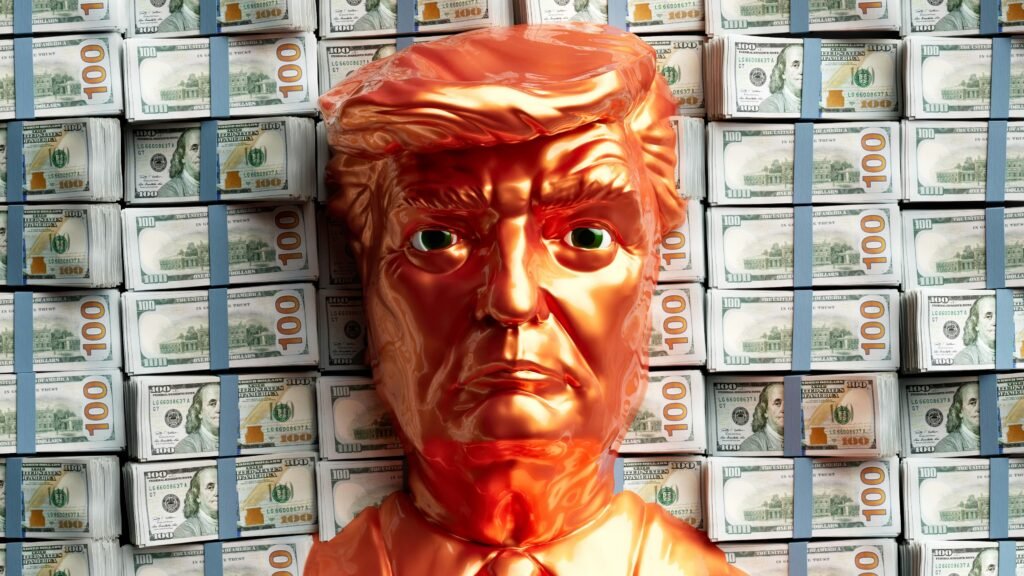Markets around the world are entering 2025 on high alert as investors brace for potentially sweeping tariff actions from US President Donald Trump, along with fresh inflation data expected from the United States this week. With continued ambiguity surrounding the administration’s trade policy, financial markets across Europe, Asia, and the Americas are reacting to the uncertainty with caution.
Tariff Threats Rattle Global Confidence
President Trump’s recent comments suggest his administration is preparing new import tariffs that could significantly alter global trade flows. Among the targets are traditional trade partners like Canada and Mexico, alongside a broadening list of Chinese imports. Reports indicate that tariffs as high as 25% on certain goods are under consideration, with steel, automobiles, and electronics among the most affected sectors.
These moves have triggered immediate concern from financial institutions and global trade bodies. Economists at Goldman Sachs estimate that if the full spectrum of proposed tariffs is enacted, the cost of consumer goods in the US could spike by up to 2% over the next two quarters. Meanwhile, the IMF has warned that retaliatory measures from targeted countries could shrink global GDP growth by 0.3% this year.
European Union officials, already frustrated by what they call “unilateral disruptions” to the global trade order, have hinted at countermeasures. In Asia, Japan and South Korea are reportedly considering a coordinated response, particularly if tariffs extend to technology components and electric vehicles.
Inflation in Focus as Data Looms
At the same time, investors are preparing for the latest US Consumer Price Index (CPI) data set to be released later this week. Analysts expect a modest uptick in core inflation, with estimates hovering around a 0.4% monthly increase. Though inflation cooled during late 2024 due to lower energy prices, concerns are mounting that renewed tariffs could re-ignite pricing pressures, particularly in sectors reliant on imports.
Federal Reserve officials have remained tight-lipped ahead of the release. However, several regional Fed presidents, including those from Chicago and Dallas, have previously noted that trade disruptions could complicate the path toward further interest rate cuts in 2025. Should inflation accelerate faster than expected, the central bank may adopt a more cautious tone in its next policy meeting.
Markets React with Volatility
Global stock indices have reflected growing unease. On Monday, the S&P 500 closed down 1.6%, with similar losses observed on the Nasdaq and Dow Jones Industrial Average. European markets followed suit, with the FTSE 100 shedding 1.2% and Germany’s DAX down nearly 1.8%. In Asia, the Nikkei 225 closed lower for the third consecutive session, and the Hang Seng Index saw its sharpest daily decline since November.
Currency markets also responded. The US dollar strengthened slightly against the euro and yen, reflecting investor preference for perceived safe havens, while emerging market currencies, especially in Latin America and Southeast Asia, experienced heightened volatility.
Commodity markets were not spared either. Brent crude fell 1.9% amid fears that tariffs and inflation could suppress consumer demand, while gold prices edged higher as traders sought protection from risk.
Corporate America Sounds the Alarm
American corporations, particularly in manufacturing and retail, are beginning to express concern over the potential impact of renewed tariffs. Major retail groups including the National Retail Federation and the American Apparel & Footwear Association have called for policy clarity, warning that price hikes on imported goods could hurt consumers just as purchasing power was beginning to stabilize.
Companies such as General Motors and Apple have already revised earnings guidance, citing supply chain disruptions and higher input costs tied to geopolitical tensions and trade policy speculation. Meanwhile, logistics firms like FedEx and UPS are bracing for a downturn in cross-border shipping volume, with some already reporting rerouted supply lines due to early signs of trade friction.
Investors Adjust Portfolios Amid Policy Ambiguity
With no clear timeline for tariff implementation and inflation data pending, investors are adjusting their portfolios to mitigate risk. Fund managers are increasingly shifting capital into sectors less sensitive to trade flows, including healthcare, utilities, and domestic technology services.
Conversely, firms heavily exposed to global supply chains or reliant on overseas manufacturing are being downgraded by analysts. Some hedge funds are reportedly taking short positions in consumer discretionary and automotive stocks, anticipating earnings hits in the upcoming quarter.
Goldman Sachs, in a note to clients, emphasized the need for agility. “Policy headlines are driving market sentiment more than fundamentals at this moment. Investors should prepare for volatility spikes, especially around economic data releases and official trade announcements.”
Geopolitical Implications and Global Response
The broader geopolitical implications of renewed US protectionism are also beginning to surface. Diplomatic relations with China remain frosty, and trade envoys from Beijing have signaled that a reactivation of tit-for-tat tariffs is not off the table. Similarly, Canadian officials have warned of legal action through the World Trade Organization if aluminum and dairy exports are targeted.
In Europe, leaders are expressing concern about the fragmentation of international trade norms. European Central Bank President Christine Lagarde commented in Brussels that “sustained uncertainty in trade policy is becoming a structural risk to the global economy.” She called for the US to coordinate more closely with allies, rather than act unilaterally.
Asian economies, particularly export-heavy nations like South Korea, Taiwan, and Vietnam, are reassessing regional trade pacts to shield against future shocks. Some analysts believe this could accelerate the shift toward Asia-led trade cooperation frameworks, reducing dependency on the US market in the long term.
Outlook: A Market on Edge
With tariffs still speculative but inflation data imminent, markets remain in a holding pattern. The coming weeks will be crucial in determining whether the Trump administration follows through on its protectionist threats or uses them as bargaining chips in future negotiations.
Regardless of the outcome, investors and policymakers alike are keenly aware of the stakes. Economic growth in 2025 is already projected to decelerate from post-pandemic highs, and any major trade shock could tip the scales toward recession in several vulnerable economies.
Until there is greater clarity on both tariff policy and inflation trajectories, global markets are likely to remain in a state of heightened vigilance.
Disclaimer: This article is for informational purposes only and does not constitute financial advice.













